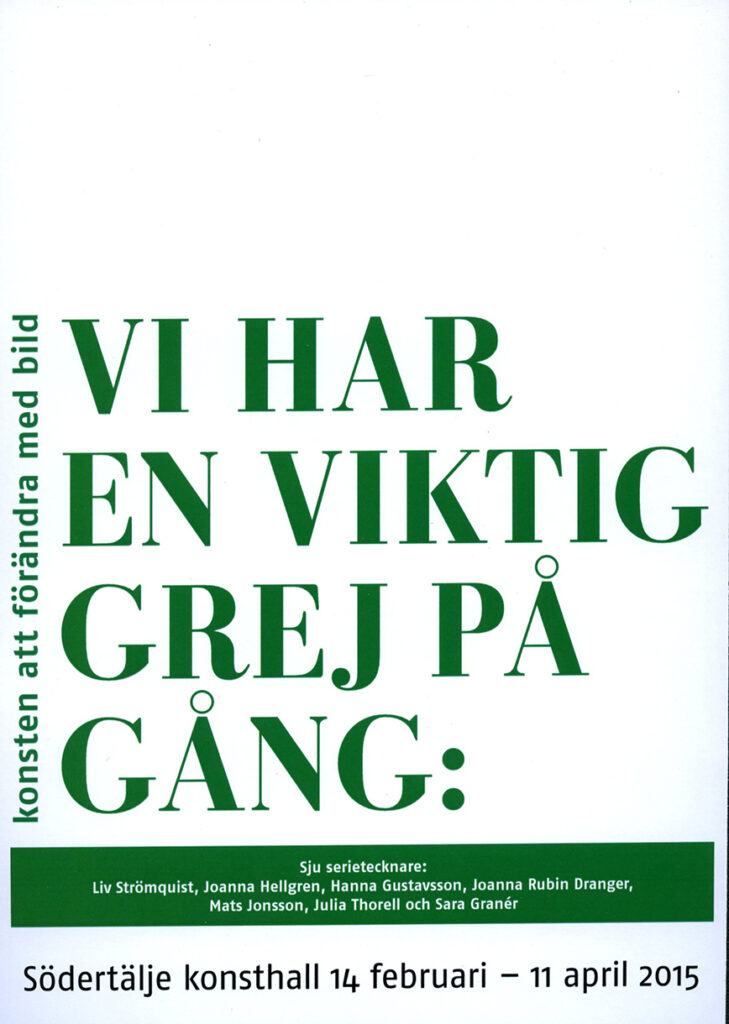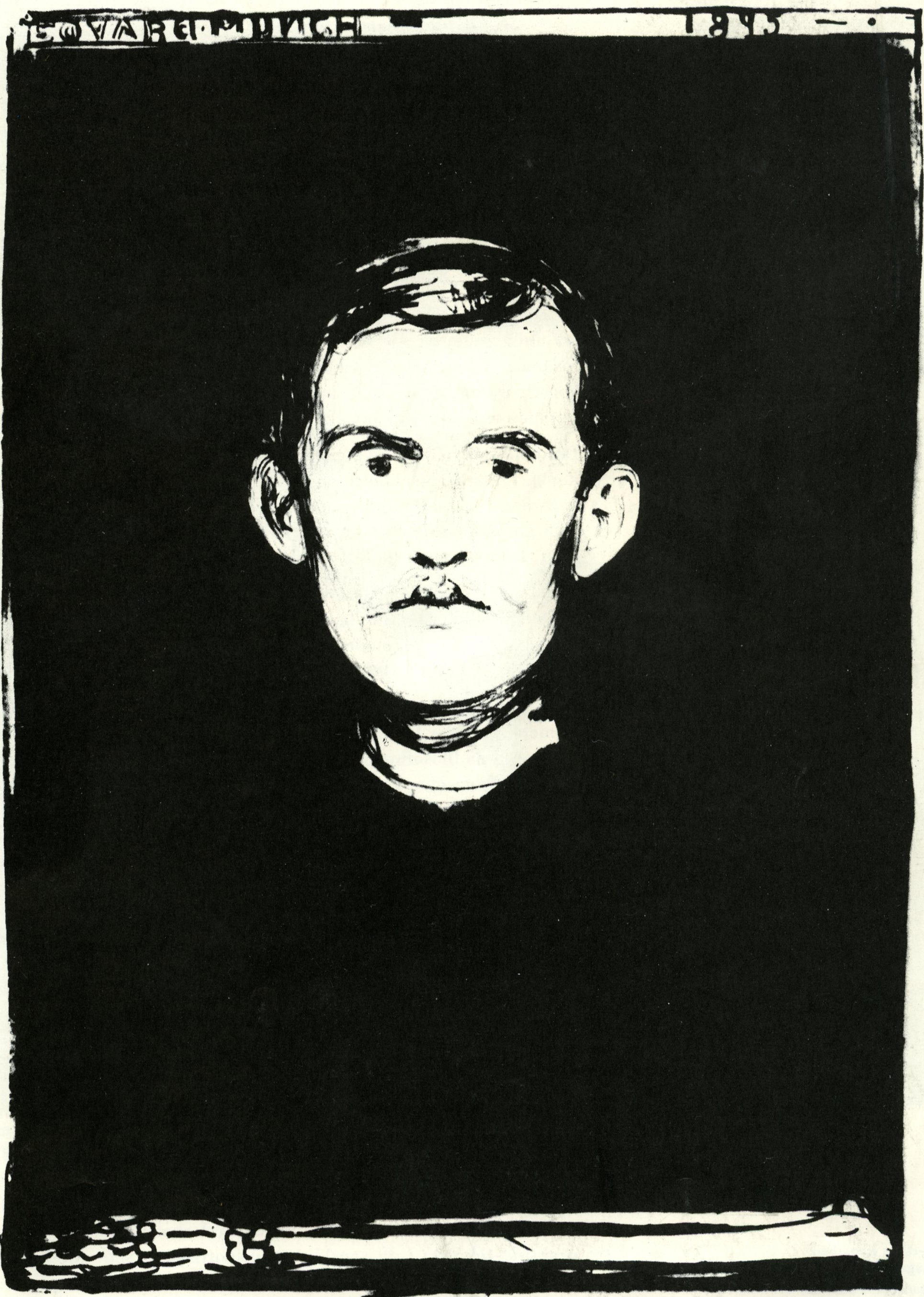


The exhibition included etchings, drypoint technique prints, lithography and woodcuts. A total of 104 works were borrowed from the Munch Museum in Oslo. Södertälje konsthall opened 18 May 1968 and was located at Järnagatan 22 in Södertälje, in the newly built offices of the Baptist church. Per Drougge was head of Södertälje konsthall from 1974 to 1984 and succeeded Eje Högestedt, 1967-1974, who was the municipality’s first gallery director. We have chosen to publish the foreword by Drougge in its entirety as it might be of historical interest.
EDVARD MUNCH AND THE MUNCH MUSEUM IN SÖDERTÄLJE KONSTHALL
That the today world famous Munch Museum in Oslo not only meets the great metropoles’ wishes to exhibit art by Munch owned by the museum, but also extends their goodwill to a middle sized Swedish municipality – which has now happened – is a sign of a new way of museum thinking in a true cultural democratic spirit, but it is also an act in line with Edvard Munch’s own ideas about art and communication.
That the culture committee in the industrial city of Södertälje, with a short art exhibition history but with ambitions that are extraordinary in the culture field, has ventured to exhibit Munch’s graphic art is indeed a unique initiative, an initiative that in turn obliges the municipality’s population to show their appreciation through multiple visits to Södertälje konsthall this spring, both individually, in form of families or associations, but not least through school visits.
On the other hand, there is no explanation needed why one is exhibiting Munch’s art. Edvard Munch is after all the only Nordic artist that has had a crucial and continued importance for modern art history, and as a graphic artist he joins the ranks of the most famous names of all times, Dürer, Rembrandt, Goya, Daumier, Hokusai…
With this exhibition the people of Södertälje, and all those who travel here, have an indispensible opportunity to get to know an artistry that in images has interpreted the ideas of an entire era pivotal for modern history, an era to which the most important Swedish contribution was Strindberg’s authorship.
Munch’s graphic works give opportunities for innumerable associations to the pioneers of modern philosophy, psychology, poetry and drama, to Nietzsche, Freud, Mallarmé, Ibsen and – as mentioned – Strindberg, with whom Munch a couple of periods in his life came into intense and conflict-ridden contact. For all great artists there are constantly new renaissances. That is the case with Munch, as well as with Ibsen and Strindberg. We are now in an intense period when it comes to Ibsen-Strindberg drama. And the poster for the latest well-recognised staging of Strindberg’s “To Damascus” (“Till Damaskus”) is a Munch lithography, “Jealousy” (“Svartsjuka”). In other words, it is an act that more than looks like a thought, that an exhibition by Edvard Munch’s graphic works is shown at Södertälje konsthall this spring.
A thank you for making this exhibition possible is naturally primarily directed at the director of Olso municipality’s art collections/Munch Museum Pål Hougen, and his closest colleagues 1st conservator Arne Eggum and conservator Gerd Woll – the latter especially in capacity of an expert on Munch’s graphics. Also a thank you to Galleri F, Moss, and the brothers Lars and Niels Brandstrup with whom we have had a good collaboration, and who has in connection to the Munch exhibition helped us administratively in negotiations on the Norwegian side, and practically and technically in the precarious issues of transport that always arises when art is being moved out of its protective museum environment.
Södertälje konsthall, April 1974
Per Drougge, curator